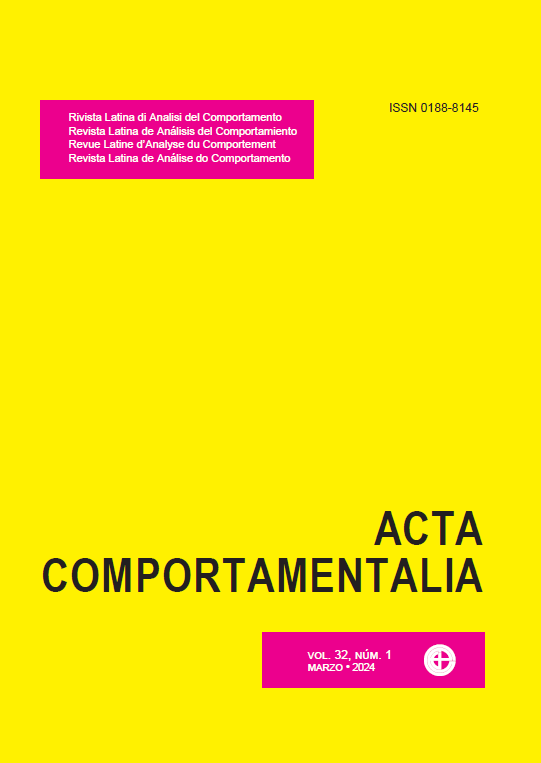Effects of Self and Peer Video Modeling on Textual Responses in Children with ASD
Main Article Content
Abstract
Video modeling—an empirically supported intervention—consists of exhibiting videos portraying a behavior to install or modify the respective behavior of the viewer, who, after watching the video, is asked to imitate it. The present study compared self video modeling and peer video modeling in teaching textual responses under the control of consonants of the Portuguese alphabet to three children diagnosed with Autism Spectrum Disorder (ASD). A mixed between-participant multiple baseline and alternating treatment design was employed. Two boys and one girl, between four and seven years old, were exposed to: a preference assessment to determine potentially reinforcing items, a textual response baseline phase with differential reinforcement but no prompts or video modeling, a post-video elaboration probe, a video preference assessment, and a video modeling phase (with self and peer video conditions). Experimental control was improved in relation to previous studies: consequences for the emission of correct and incorrect responses in all phases were identical; the peers were physically similar to the participants; and the participant’s preference for videos was evaluated. The results indicated similar effects of both video modeling conditions on correct textual responses for two of the three participants. The third participant reached the performance criterion in the self video modeling condition after more sessions than the other participants, and stabilized his correct responses in 60% in the peer video modeling. Overall, both self and peer video modeling appear effective in teaching textual responses. The slightly better results in the self video modeling condition can be attributed to the emission of echoic responses related to the consonants employed in that condition during the elaboration of the videos. All participants preferred the peer video, what may be related to the use of peers who were physically similar to the participants. Evidence suggests positive effects arising from the type of intervention evaluated and the need for future research to evaluate the teaching of other skills.
Article Details

<a rel="license" href="http://creativecommons.org/licenses/by-nc-sa/4.0/"><img alt="Licencia de Creative Commons" style="border-width:0" src="https://i.creativecommons.org/l/by-nc-sa/4.0/88x31.png" /></a><br />Este obra está bajo una <a rel="license" href="http://creativecommons.org/licenses/by-nc-sa/4.0/">licencia de Creative Commons Reconocimiento-NoComercial-CompartirIgual 4.0 Internacional</a>.
